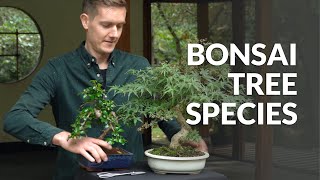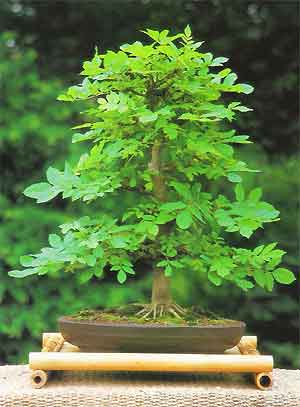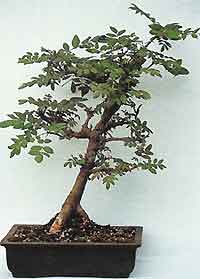Ash bonsai trees need regular watering, balanced fertilization, and proper pruning. Ensure they get enough sunlight and maintain well-drained soil.
Ash bonsai trees are captivating and require specific care to thrive. Their unique appearance makes them a favorite among bonsai enthusiasts. Proper watering is crucial; keep the soil consistently moist but not waterlogged. Use a balanced fertilizer during the growing season to maintain health.
Pruning helps shape the tree and encourages new growth. Ensure the tree receives ample sunlight, ideally 4-6 hours daily. Well-drained soil prevents root rot and promotes healthy growth. Regularly check for pests and diseases, treating them promptly. With the right care, your ash bonsai tree will flourish beautifully, adding elegance to any space.

Credit: www.bonsaiempire.com
Introduction To Ash Bonsai
Ash bonsai trees have a rich history. They originate from Europe and Asia. These trees have been part of bonsai art for centuries. Ancient cultures prized them for their beauty. The ash tree is also known for its strength.
Ash bonsai trees have compound leaves. These leaves are made up of smaller leaflets. The bark is smooth when young. As the tree ages, the bark becomes rough. Ash trees are known for their fast growth. They can grow in various soil types. This makes them easy to care for.

Credit: www.why-bonsai.com
Choosing The Right Ash Species
There are many ash tree species. The most popular ones for bonsai include the European Ash, Green Ash, and White Ash. Each species has unique features. The European Ash has slender leaves. The Green Ash is known for its bright green foliage. The White Ash has compound leaves and grows quickly. Choose a species that fits your style and climate.
Ash trees thrive in various climates. Green Ash can tolerate dry conditions. White Ash prefers moist environments. European Ash grows well in temperate regions. Ensure your ash bonsai gets enough sunlight. Protect it from extreme cold and heat. Proper climate care ensures a healthy bonsai.
Planting And Repotting
A good soil mix for ash bonsai trees is important. Use well-draining soil. Combine Akadama, pumice, and lava rock. These materials help the roots breathe. They also provide nutrients. Avoid using heavy clay soil. It holds too much water. This can harm the tree roots.
Repotting an ash bonsai tree needs care. First, remove the tree from its pot. Carefully trim the roots. Use clean scissors. Prepare a new pot with fresh soil mix. Place the tree in the new pot. Spread the roots gently. Cover the roots with soil. Press the soil gently around the tree. Water the tree after repotting.
Watering Needs
Regular watering is essential for the Ash Bonsai tree. Ensure the soil remains moist but not waterlogged. Proper hydration supports healthy growth and vibrant foliage.
Frequency And Amount
Ash Bonsai trees need water regularly. Water the tree every three to four days. Ensure the soil stays moist but not soggy. Too much water can harm the tree. Use a watering can with a fine spout. This helps control the amount of water. Avoid letting the soil dry out completely. Check the soil with your finger. If it feels dry, water the tree. Always use room temperature water for the best results.
Signs Of Overwatering
Overwatered Ash Bonsai trees show yellow leaves. The leaves may also drop off. The roots can rot if too wet. You may see a foul smell from the soil. The tree may look weak and unhealthy. Ensure good drainage to prevent overwatering. Use a pot with drainage holes. Avoid watering if the soil is still wet. Let the soil dry a bit between waterings.
Pruning And Shaping
Pruning an Ash bonsai helps it grow better. Start by removing dead or unhealthy branches. Always use clean and sharp tools. Cut just above a node to encourage new growth. Avoid cutting too much at once. Small, regular trims are better.
Prune your Ash bonsai in spring or early summer. This is when the tree is growing fast. Never prune during winter. The tree needs to rest during this time. Regular checks help keep your bonsai healthy. Always look for new shoots and trim them.
Fertilizing Your Ash Bonsai
Fertilizers help your Ash Bonsai grow strong. There are organic and chemical fertilizers. Organic fertilizers come from natural sources. They release nutrients slowly. Chemical fertilizers are man-made. They release nutrients quickly. Use balanced fertilizers with equal parts of nitrogen, phosphorus, and potassium. This helps the tree get all the nutrients it needs.
Fertilize your Ash Bonsai during the growing season. This is from spring to early autumn. Apply fertilizer every two weeks. Stop fertilizing in late autumn. The tree rests in winter. Over-fertilizing can harm your tree. Follow the instructions on the fertilizer package. Too much fertilizer can burn the roots. Always water the tree before applying fertilizer.
Pest And Disease Management
Ash Bonsai trees can attract several pests. Aphids, spider mites, and scale insects are common problems. Aphids suck the sap from leaves, causing them to wilt. Spider mites create tiny webs and make the leaves look dusty. Scale insects attach themselves to the bark and branches. They suck the tree’s sap, weakening it.
Regular inspection helps catch problems early. Check the leaves, branches, and soil. Keep the tree clean by wiping the leaves. Use a mild insecticidal soap to treat small infestations. Avoid over-watering, as pests love damp conditions. Ensure good air circulation around the tree. This helps keep pests away. Neem oil can be a natural deterrent for many pests.

Credit: www.why-bonsai.com
Seasonal Care Tips
Shield your Ash Bonsai from harsh winds. Use a cold frame for extra protection. Ensure the soil is moist but not waterlogged. Place the tree in a sheltered spot away from frost.
Water the tree daily during hot days. Use a spray bottle for misting. Keep the tree in partial shade to avoid sunburn. Check for pests and treat them promptly.
Displaying Your Bonsai
Ash Bonsai trees can be displayed both indoors and outdoors. Indoor settings offer stable temperatures and protection from harsh weather. Outdoor settings provide natural light and fresh air. Choose the environment based on your local climate and the tree’s needs. Indoor trees need more attention to light and humidity. Outdoor trees can thrive in natural conditions but must be protected from extreme weather.
Arrange your Ash Bonsai to highlight its natural beauty. Use a simple pot that does not distract from the tree. Place it on a display stand to elevate its presence. Add small rocks or moss around the base for a natural look. Keep the display area clean and uncluttered to focus on the bonsai.
Conclusion
Caring for an Ash Bonsai tree requires patience and attention. Regular pruning and proper watering are essential. Ensuring the right soil mix will promote healthy growth. With these tips, your Ash Bonsai will thrive beautifully. Embrace the journey, and enjoy the art of bonsai cultivation.

